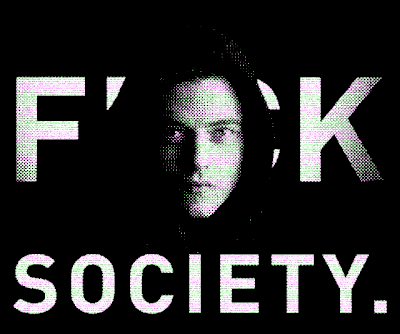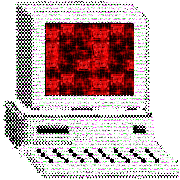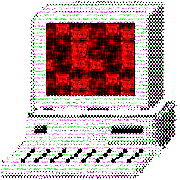'Mr. Robot: society honors its living conformists and its dead troublemakers'
November 7, 2025 by s1m0n3

|
[EN] There is a sentence that perfectly captures the beating, and unsettling heart of Mr. Robot:
“Society honors its living conformists and its dead troublemakers.”
This quote does not originate within the show. It’s a thought attributed to various writers and activists over time, an idea that has become almost a saying about how modern societies treat obedience
|
and dissent. Mr. Robot adopts it because it reflects the core tension on which the entire story rests. For those unfamiliar with the series: Mr. Robot follows Elliot Alderson, a brilliant yet fragile hacker who views the world as a system built to shield the powerful while numbing everyone else. The quote fits his worldview perfectly. It isn’t just social commentary; it’s a lens through which the show invites us to interpret its characters, their decisions and the subtle ways power operates.
1. The living conformists: the ideal gears of the system
Within the series, conformists are the people who keep the system running smoothly. They follow unwritten rules that everyone seems to accept without question. They include Evil Corp’s executives, politicians performing rehearsed roles, and ordinary citizens who choose the comfort of illusion over the discomfort of truth. The system rewards them with recognition, security and moral invisibility. Their purpose is simple: don’t disrupt the order.
2. The living troublemakers: dangerous, disruptive, unwelcomed
Elliot Alderson, fsociety, and even Whiterose (in her distorted way) embody the opposite archetype: the living troublemaker.
They are the people who see the system for what it is, who refuse to accept the dominant narrative, who try to change what society has decided must remain untouched.
According to the logic of the quote:
a living rebel frightens,
destabilizes,
breaks the collective story society tells about itself.
And indeed, Elliot is:
pathologized,
monitored,
manipulated,
labeled as a threat rather than a symptom.
A troublemaker in life cannot be honored.
He is not useful to the system, he is a flaw in the code.
3. The dead rebels: harmless myths, sanitized icons
The series highlights a recurring pattern throughout history:
what society demonizes when alive, it romanticizes once dead.
A dead troublemaker cannot disrupt the present.
They become a quote, a mural, a T-shirt - harmless, controllable, commodified.
The critique is clear:
Society turns revolutionaries into icons…
only once revolution is no longer dangerous.
4. From fiction to reality: the troublemakers of today
This is where Mr. Robot merges with the world we actually live in.
Today’s troublemakers are not masked hackers (or at least not only them).
They are:
journalists who dare ask uncomfortable questions,
researchers who challenge dominant economic or technological models,
digital-rights activists exposing surveillance and data abuse,
whistleblowers willing to sacrifice careers and sometimes even their freedom, like Julian Assange, to reveal what the system hides.
We live in a world where:
data is currency,
platforms are political actors,
mega-corporations hold unprecedented cultural, social, and economic power.
Those who challenge this order are routinely:
marginalized,
discredited,
algorithmically buried,
labeled as extremists, naïve, paranoid, or “dangerous”.
And, as in Mr. Robot, many of these rebels will not be celebrated today.
Perhaps they will be honored decades from now,
once their ideas are safe,
once their fight poses no threat.
Because society prefers to commemorate rebellion, not coexist with it.
5. Mr. Robot as a manifesto of our time
The power of Mr. Robot lies in how it dramatizes a fundamental truth:
Rebellion is acceptable only when it stops working.
Conformity is rewarded because it keeps the system running.
Rebellion is punished because it forces the system to admit its cracks.
Today, this dynamic is amplified by technology,
the most powerful tool ever placed in the hands of those who control the digital infrastructure of the world.
Conclusion
Mr. Robot is not just a series about hacking or cyber-activism.
It is a contemporary parable about how society chooses who to reward and who to fear.
It honors those who obey.
It tolerates those who disrupt only when they can no longer disrupt.
In an age where true troublemakers, independent journalists, free thinkers, digital activists, struggle against increasingly dominant tech corporations, the quote resonates louder than ever.
It is not merely an observation.
It is a warning.
And the key to understanding both Mr. Robot and the world we inhabit.
[IT] C’è una frase che cattura alla perfezione il cuore pulsante, e disturbante, di Mr. Robot:
“Society honors its living conformists and its dead troublemakers.” Questa citazione non nasce all’interno della serie. È un pensiero attribuito nel tempo a diversi scrittori e attivisti, un’idea che è diventata quasi un modo di dire su come le società moderne trattano l’obbedienza e il dissenso. Mr. Robot la fa propria perché riflette la tensione centrale su cui si regge l’intera storia. Per chi non conosce la serie: Mr. Robot segue la vita di Elliot Alderson, un hacker brillante e fragile che vede il mondo come un sistema costruito per proteggere i potenti e intorpidire tutti gli altri. La frase si adatta perfettamente alla sua visione. Non è solo un commento sociale, ma una lente attraverso cui la serie ci invita a interpretare i personaggi, le loro scelte e i modi sottili in cui il potere agisce.
1. I conformisti vivi: gli ingranaggi ideali del sistema
All’interno della serie, i conformisti sono le persone che mantengono il sistema in funzione. Seguono regole non scritte che tutti sembrano accettare senza metterle in discussione. Sono gli executive di Evil Corp, i politici che recitano ruoli già preparati e i cittadini che scelgono la comodità dell’illusione al posto del disagio della verità. Il sistema li ricompensa con riconoscimento, sicurezza e invisibilità morale. Il loro compito è semplice… non disturbare l’ordine.
2. I ribelli vivi: scomodi, pericolosi, da zittire
Elliot Alderson, fsociety, Whiterose (seppur in forma distorta) rappresentano il prototipo opposto: i troublemakers vivi.
Sono le persone che vedono il sistema per ciò che è, che non accettano la narrativa dominante, che vogliono cambiare ciò che la società ha deciso debba rimanere intoccabile.
Secondo la logica della frase:
un ribelle vivo fa paura,
destabilizza,
rende instabile il racconto collettivo.
E infatti Elliot viene:
patologizzato,
sorvegliato,
manipolato,
trasformato in una minaccia invece che in un sintomo.
In vita, un troublemaker non può essere onorato.
Non è utile al sistema, è un virus.
3. I ribelli morti: miti innocui, simboli sterilizzati
La serie suggerisce un tema ricorrente nella storia:
ciò che la società demonizza quando è vivo, lo santifica quando è morto.
Un ribelle morto non può più cambiare il presente.
È solo un ricordo, una citazione motivazionale, un volto su un poster: innocuo, manipolabile, commercializzabile.
La critica è evidente:
La società trasforma i rivoluzionari in icone…
solo quando la rivoluzione non è più una minaccia.
4. Dalla fiction al presente: i nuovi troublemakers
È qui che Mr. Robot si intreccia con la nostra realtà.
Nel nostro tempo, i troublemakers non sono hacker mascherati (o almeno, non solo).
Sono:
giornalisti che mettono in discussione narrazioni comode,
ricercatori che denunciano pratiche opache,
attivisti digitali che rivelano come la tecnologia venga usata per controllare più che liberare,
whistleblower disposti a sacrificare la propria carriera e a volte persino la loro libertà, come Julian Assange, per rivelare ciò che il sistema nasconde.
Viviamo in un mondo dove:
i dati sono valuta,
le piattaforme sono infrastrutture di potere,
le mega-corporazioni possiedono un’influenza politica e culturale senza precedenti.
Chi sfida questo ordine viene spesso:
etichettato come estremista,
silenziato,
ridicolizzato,
spinto ai margini del discorso pubblico.
E, proprio come in Mr. Robot, molti di questi ribelli non saranno celebrati oggi.
Forse lo saranno tra vent’anni, quando il loro impatto sarà stato assorbito e reso “accettabile”.
Forse.
Perché la società preferisce commemorare il disturbo, non conviverci.
5. Mr. Robot come manifesto del nostro tempo
La grande forza di Mr. Robot è la sua capacità di rivelare il meccanismo del potere in una forma narrativa:
la ribellione è accettabile solo quando non interrompe il funzionamento del sistema.
Il conformismo è premiato perché garantisce stabilità.
La ribellione è punita perché rivela crepe che nessuno vuole vedere.
E questa dinamica, oggi, è amplificata dalla tecnologia:
un’arma nelle mani di chi controlla l’infrastruttura digitale del mondo.
Conclusione
Mr. Robot non è soltanto una serie sul cyberattivismo o sul dissenso.
È una parabola contemporanea su come la società decide chi premiare e chi temere.
Onora chi obbedisce.
Tollera chi disturba solo quando non può più farlo.
In un’epoca in cui i veri troublemakers, giornalisti indipendenti, attivisti digitali, pensatori non allineati, lottano in un ambiente dominato da corporazioni tecnologiche sempre più potenti, la frase risuona ancora più forte.
Non è solo una citazione.
È un avvertimento.
Ed è la chiave per leggere sia Mr. Robot che il mondo che abitiamo.
⊲⊲⊲ go back






